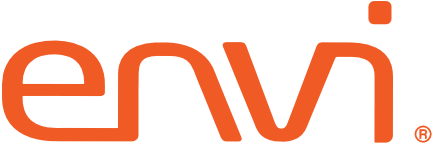I’m lucky. I spend my days working with different care providers across the country, helping map and create processes to streamline supply chain, and support an efficient infrastructure for their business. Some days it’s an Ambulatory Surgery Center, the next may be a network of primary care facilities, and then it’s a regional group of urgent care centers. And while there are differences in these businesses – the type of care delivered, what patients need, what products are used – there are things that are always the same. Quality care. Affordable prices. Consistency and safety.
Today, Envi users want to talk about improving their processes with proven best practices, and this month, we’re talking about purchase order approvals.
Here’s what I know: It’s actually faster if you build processes to approve POs on the front end, not invoices on the back-end. Take a bit of time now to set up your PO approvals correctly, and you’ll save a ton of time in the future. Plus you’ll save money through correct pricing and contract utilization. Consider these suggestions:
1. Create an end-to-end map of your PO approval processes
– Use this map to identify process gaps
o Are there manual steps covering technology gaps?
o Does your organization have an audit plan? If so, does your PO approval processes match the checklist in your plan?
2. Identify PO approval authority for your team
– Determine roles and approval levels for authorized team members
– Identify processes to manage non-file items, including who can handle these requests
– Determine back-up approvers at each level to prevent delays
– Determine over-ride authority for managers – who can change a PO, accept price changes, or make substitutions?
3. Create a more proactive approach to approvals and order management with notifications
– Set up email and dashboard notifications
– Note for Envi users – be sure you’ve downloaded the mobile app and set up badge notifications
4. Direct buyers to your approved formulary and actively manage purchase orders
– Validate orders against formulary to get your best available price and maintain product quality
– Handle POs electronically to increase visibility to overall ordering and spend. It’ll help you manage actuals against budget and support planning processes
5. Train for continuous process improvements
– Train team members on internal steps to enable changes to product data, formulary and pricing
– Set up internal product transfers to reduce over-ordering and increase use of on-hand inventory
– Help your team get it right! If an approver disallows a PO, return it to the originator with an explanation that helps the requestor with correct information for the next order
Want to read more about Best Practices in PO Approvals? Check out the Best Practices section of the IOS website! And to stay up-to-date about Best Practice-based supply chain processes, subscribe to our monthly Best Practices Newsletter.
About the Author
Lanie Farkas
Director of Projects and Implementations
Inventory Optimization Solutions (IOS)
With in-depth healthcare and supply chain knowledge, Lanie Farkas also brought hands-on Envi expertise when she joined IOS in 2006, after being a super user at a large organization with more 50 veterinary labs across the U.S. With a passion for creating a better healthcare supply chain, Lanie delivers real-world, best practice-based expertise to IOS customers. As the Director of Client Services and Implementations/Projects, Lanie is the lead on customer experience from the moment an organization signs an agreement through go-live, including system build, data collection, training and everything fun in-between. She guides IOS customer through the process, making sure they’re ready for success. When she’s not working, Lanie takes her Ducati out for two-wheel therapy and enjoys bringing her bulldog to local veterans’ homes in the Las Vegas area.
